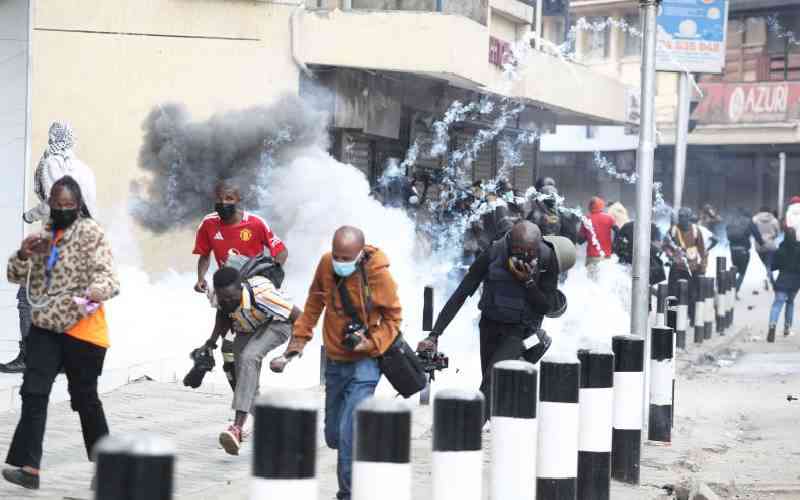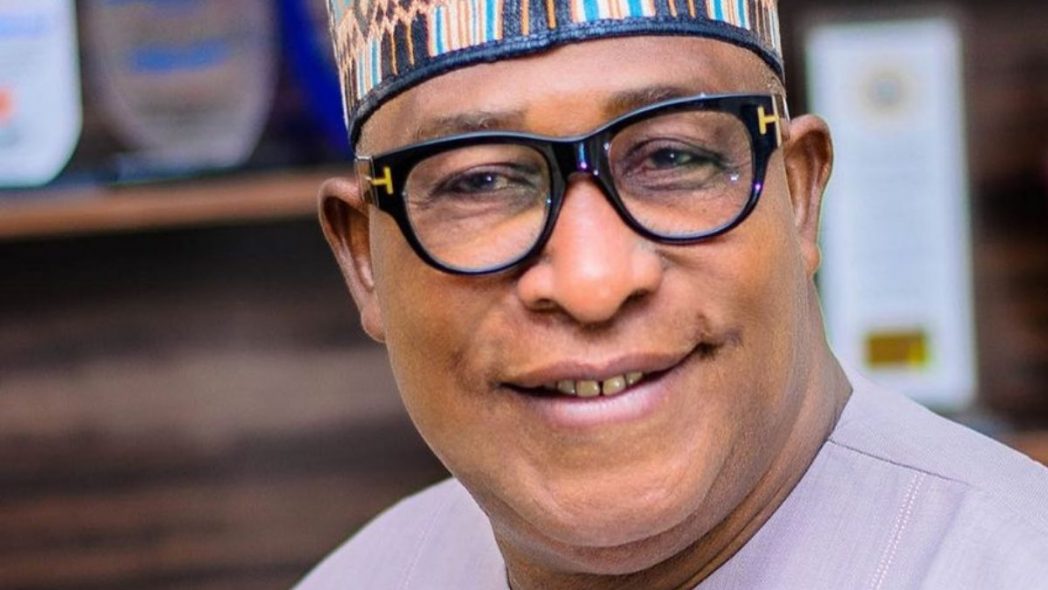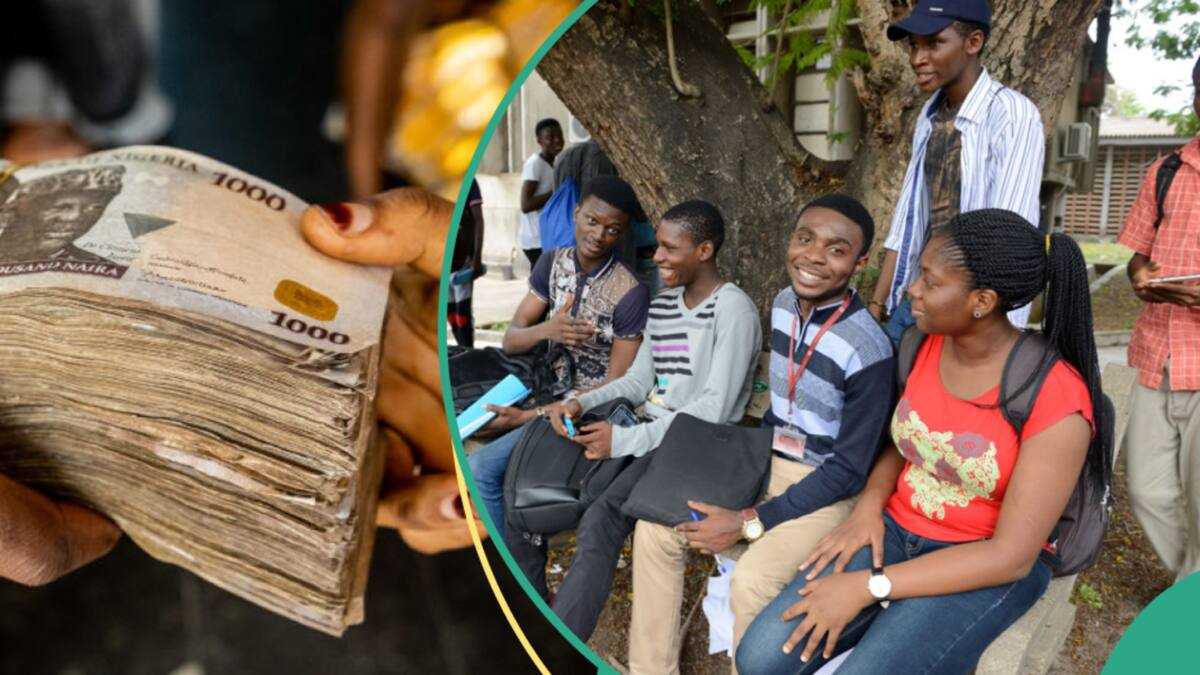Violent attacks against journalists highlight shrinking press freedom

President William Ruto’s administration is once again under scrutiny for undermining press freedom, following the shutdown of several television stations last week. This move, widely condemned by media and civil society, mirrors similar actions taken under previous administrations, actions which courts have previously ruled unlawful.
In 2018, the High Court blocked the closure of three TV stations by President Uhuru Kenyatta. Despite this precedent, the current government has followed a similar path, disregarding legal and constitutional safeguards. As journalists continue to report from the frontlines of anti-government demonstrations, many have faced police brutality, intimidation, and harassment.
According to the Media Council of Kenya, at least 24 journalists were attacked and injured during the Gen Z-led protests last year. Numerous others had previously been assaulted during similar demonstrations.
The latest round of protests, held last week to mark the anniversary of those killed or injured in June 2024, saw a fresh wave of violence. More journalists were assaulted, and additional protestors were reportedly killed as police used force to suppress demonstrations. The conduct of law enforcement is now under renewed and intense scrutiny.
Repeated calls from organisations, such as the Kenya Editors Guild (KEG), the Media Council of Kenya (MCK), the Kenya Union of Journalists (KUJ), and the International Federation of Journalists (IFJ) for investigations into police violence against media workers have been consistently ignored.
In 2023, the government threatened to shut down KTN for its coverage of anti-government protests, while other media houses were warned against broadcasting footage related to the rising cost of living and rallies led by opposition leader Raila Odinga. The Communications Authority (CA) even ordered signal carriers to cut off KTN’s transmission for airing scenes of protesters storming Parliament.
The IFJ’s General Secretary, Anthony Bellanger, strongly criticised these actions, describing the targeting of journalists as a “disgraceful attempt to deny Kenyan citizens access to information.” He urged the government to uphold its democratic obligations by defending press freedom and ensuring the safety and independence of media professionals.
Despite a reputation for relatively free media compared to other African countries, Kenya’s ranking has declined. The 2024 Press Freedom Index by Reporters Without Borders warns of mounting pressure on journalists. The UK’s Guardian newspaper reported last year that President Ruto’s tenure marks a troubling shift in Kenya’s once-vibrant media landscape. The Gen Z protests, they noted, exposed the extent to which press freedom is now under threat.
Journalists have reported being attacked with tear gas, water cannons, and even live ammunition while covering demonstrations.
Many continue to work in hazardous environments, fully aware they might become direct targets. In some cases, police have been caught on video shooting at journalists at close range. Although the Independent Policing Oversight Authority (IPOA) pledged action, little has been done.
In March 2025, four journalists, including reporter Fridah Okachi and photojournalist Dennis Onsongo, were assaulted in Nairobi’s Majengo slums while covering a demonstration. They were targeted for filming police officers harassing another journalist. Seven General Service Unit (GSU) officers reportedly stormed their vehicle, demanding they delete their footage.
In yet another police crackdown last month, four filmmakers were arrested under dubious claims and later released.
Journalists say that encountering victims’ bodies and witnessing violence has left many suffering from psychological trauma.
Former BBC East Africa correspondent Mercy Juma Okande described covering the protests as both fascinating and emotionally taxing, citing the constant danger from both protestors and police.
CNN’s Larry Madowo reported that police deliberately targeted him and his crew with gunfire during coverage in Nairobi. On social media, he revealed being struck by a fragment after officers aimed at his team multiple times.
Stay informed. Subscribe to our newsletter
In a 2023 report, the Al Jazeera Media Institute alleged that the government had established a covert “Operation Support Unit” tasked with suppressing dissent and intimidating journalists. Some unit members, they claim, even posed as journalists to detain reporters.
The same year, Pakistani journalist Arshad Sharif was shot dead by police near Nairobi, allegedly after failing to stop at a roadblock. Despite public outrage, Kenyan authorities have yet to take responsibility.
Five journalists were arrested during last year’s Gen Z protests. Their brief detentions highlight the increasingly hostile climate under which reporters must operate. Observers note that not only police, but also hired political goons have assaulted journalists, often while under police protection. These thugs have also looted businesses and robbed civilians in broad daylight.
Many journalists say these conditions hinder their ability to report effectively. Collins Olunga of AFP was hospitalised after being struck by a teargas canister. John Omido, a KBC photographer, received medical treatment after police sprayed him with a chemical substance.
Standard Group journalist Justus Mwangi was beaten, forced into a police vehicle, and thrown out at high speed. Nation Media’s Maureen Muthoni was also injured and arrested.
Professional bodies, including the KUJ, KEG, Kenya Correspondents Association (KCA), Association of Freelance Journalists (AFJ), and the Association of Media Women in Kenya (AMWIK) have condemned what they describe as a systemic, sanctioned assault on the media. They cite repeated incidents of manhandling, assault, denial of access to coverage areas, and the destruction of equipment and footage.
In March 2023, MCK labelled it the darkest month in recent memory for the Kenyan press, owing to widespread violence during the cost of living protests. One of the lead protestors, journalist Hanifa Adan, said she was subjected to surveillance, propaganda, and phone tapping, but remained defiant in her reporting.
“Everyone who’s in the limelight is being tracked. That’s how they locate and target you,” she said.
Despite these risks, journalists continue to put their lives on the line to inform the public. Unless the government changes stance and guarantees media workers’ safety, press freedom in Kenya may continue its worrying decline.









